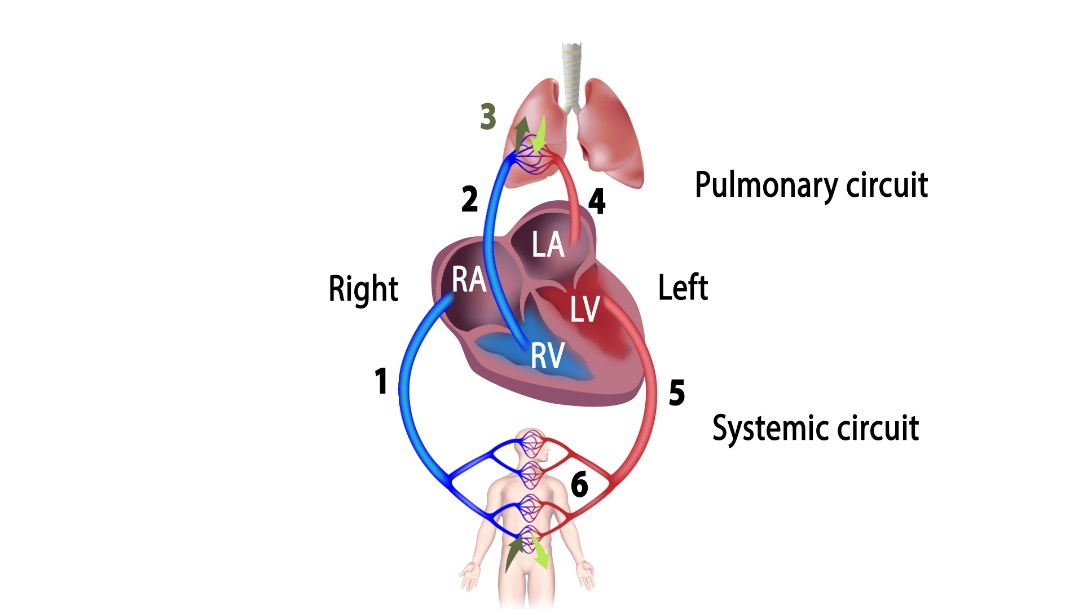Cardiovascular System Overview
All the basics of the cardiovascular system in 7 min - It's mind-boggling how simple it is!
This lesson includes an animated video lecture, downloadable images, quiz questions and a PDF
The cardiovascular system is part of the circulatory system that circulates blood. The circulatory system also includes the lymphatic system, which circulates lymph, but the terms “circulatory system” and “cardiovascular system” are commonly used interchangeably to describe blood circulation.
The cardiovascular system consists of:
- the heart,
- blood,
- and blood vessels.
The heart is essentially a pump that moves blood through the vessels. It has 2 sides (left and right), each of which has 2 chambers (atrium and ventricle):
- Right atrium (RA)
- Right ventricle (RV)
- Left Atrium (LA)
- Left ventricle (LV)
Note: As you look at a diagram (or a patient) face to face: their right is your left, their left is your right!
The best-known function of the circulatory system is perhaps the transport of gases: transport of inhaled oxygen from the lungs to body’s tissues, and removal of carbon dioxide in the opposite direction to be exhaled.
Circulatory circuits: (see numbers on figure 1):
1. Oxygen-poor blood (marked as blue, real color is dark red) from the body returns to the right side of the heart (right atrium)
2. Right ventricle pumps it to the lungs
3. In the lungs, blood picks up oxygen and releases carbon dioxide
4. Oxygen-rich blood (red) then returns to the left side of the heart (left atrium). This part of the system (2 to 4) is called the pulmonary circuit.  Figure 1
Figure 1
5. The left side of the heart (left ventricle) pumps oxygen-rich blood to body’s tissues
6. In tissues, blood unloads oxygen and picks up carbon dioxide
Subscribe to one of the courses below to continue!
This content is available within the following courses:

Anatomy and Physiology: More than 80 animations, plus downloadable PDFs, downloadable images, and quizzes.

Basic Fundamentals of Cardiology: 40 animations, plus downloadable PDFs, downloadable images, and quizzes.

Anatomy and Physiology: More than 80 animations, plus downloadable PDFs, downloadable images, and quizzes.

Basic Fundamentals of Cardiology: 40 animations, plus downloadable PDFs, downloadable images, and quizzes.